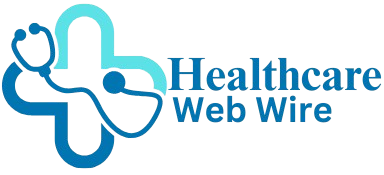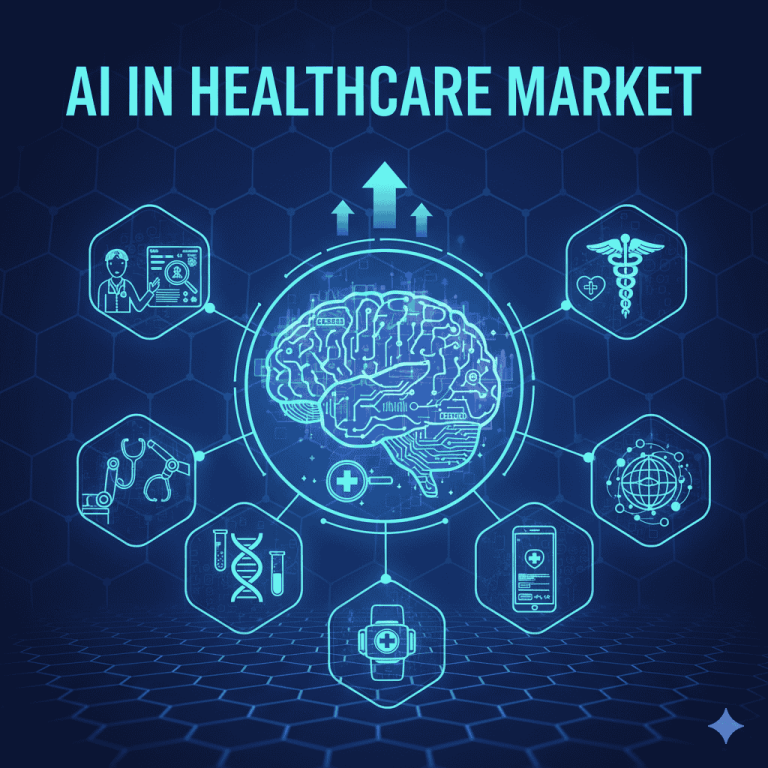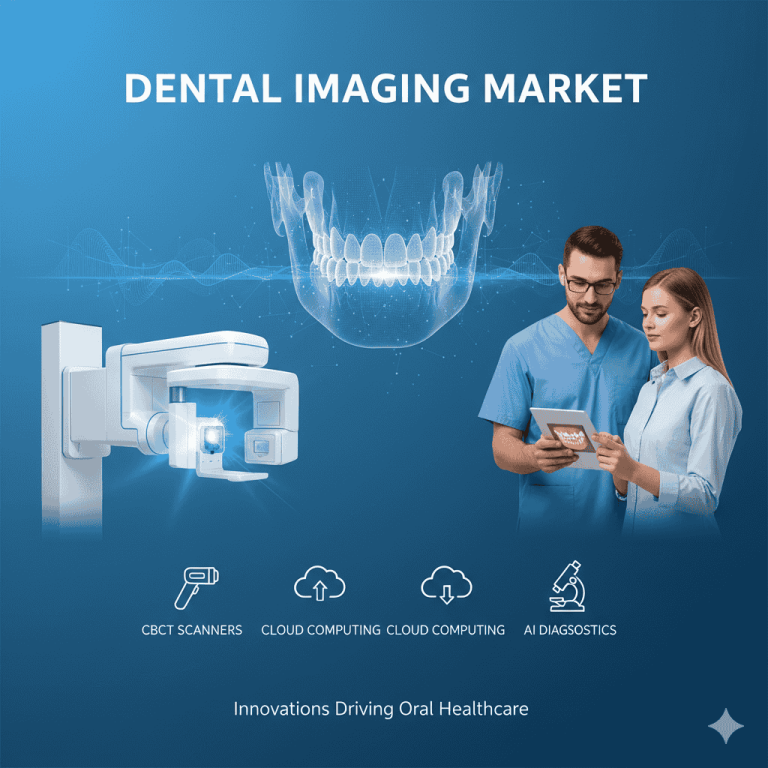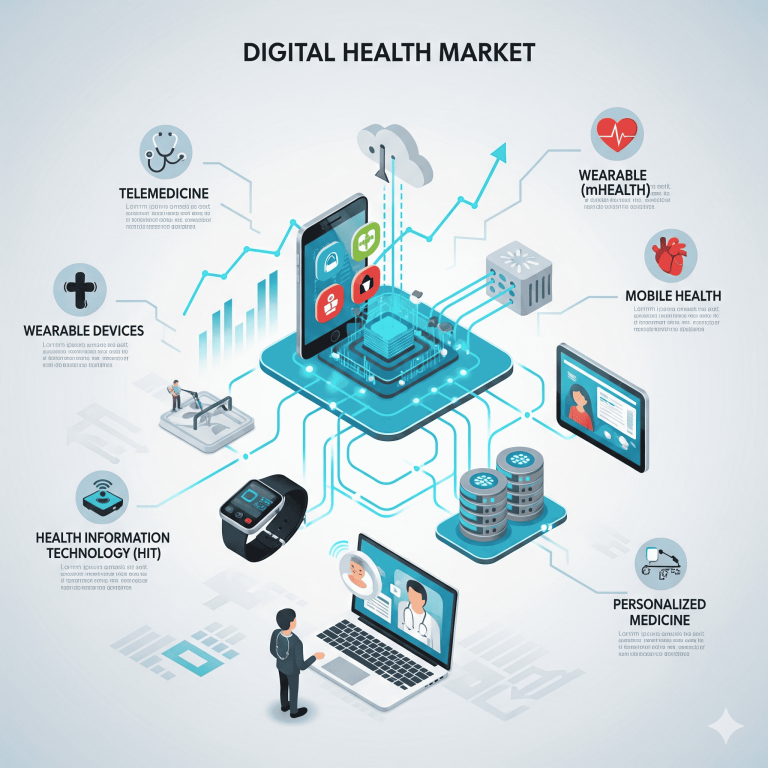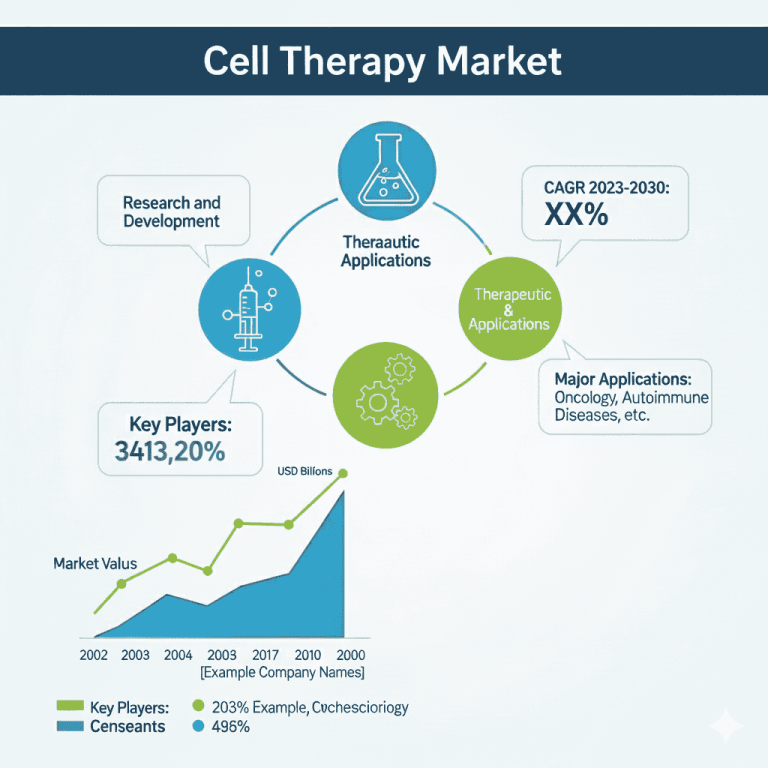The global 5G healthcare market is projected to increase from approximately USD 41.89 billion in 2022 to over USD 266.60 billion by 2032. This growth represents a substantial compound annual growth rate (CAGR) of 20.82% from 2023 to 2032, driven by a growing emphasis on patient-centered care and the increasing adoption of remote surgeries.
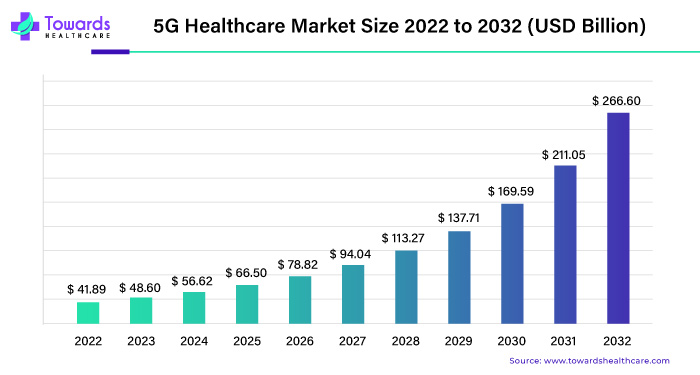
Download statistics of this report @ https://www.towardshealthcare.com/download-statistics/5087
Report Highlights
- The healthcare industry can potentially become one of the top 3 largest sectors in the global 5G market.
- The service segment by component emerged as the most prominent, with more than 50% of the market share.
- Healthcare industry dynamics boosting 5G adoption.
- North America dominated the 5G healthcare market due to the adoption of advanced technology, healthcare infrastructures, and supportive government regulations.
- The 5G healthcare setting is a dynamic area with competition and innovation.
According to a health technology company GlobalMed study, 74% of millennials choose teleconsultations over in-person visits. In comparison, only 5% of remote medical appointments lead to the necessity for a face-to-face appointment.
5G is the fifth-generation cellular wireless technology network with its key focus on speed. Other key features of 5G technology include ultra-low latency, superfast connectivity, and widespread coverage. With massive connection power and high speed, 5G technology can transform the healthcare industry. Patient value (patient-relevant outputs divided by expenses per patient to attain the outcomes) has been steadily declining, contributing to rising healthcare prices.
In addition, there is increasing concern about inadequate healthcare system administration, incorrect utilization of medical resources, and unfavourable medical situations. For instance, remote patient monitoring and telehealth reduce delays in communication between patients and caregivers; telehealth and remote patient monitoring, for example, reduce delays in communication between the care provider and the patient; however, issues such as overloaded networks and slow connectivity pose a severe problem, particularly for healthcare providers who may interact with numerous patients each day. Seamless connectivity is a must while serving the healthcare industry to provide patient-centred and timely services.
5G’s virtual characteristics define it as fast, enormous, and credible. Here are the important 5G metrics:
- Up to 10 gigabits per second (Gbps) data rate – 10 to 100x faster than 4G and 4.5G networks
- 1-millisecond latency
- 1000x bandwidth per unit area
- 100x the number of connected devices per unit area (when compared to 4G LTE)
- 99.999 per cent availability
- Battery life of up to ten years for low-power IoT devices
The Emerging Waves of 5G IoT Use Cases
5G IoT is set to revolutionize various industries, but its impact will unfold in phases. Initially, we’ll see a surge in enhanced mobile broadband (EMBB) applications. Shortly after, ultra-reliable, low-latency communication (URLLC) use cases will start to gain traction. However, it will take several more years for massive machine-type communication (MMTC) applications to become mainstream.
Businesses that stand to gain significantly from the rise of 5G include mobile operators, network providers, component and module suppliers, as well as companies in the machinery, industrial automation, and manufacturing sectors.
The Shifting Landscape of the 5G Module Market
As the 5G IoT market takes off, 5G modules are expected to be significantly more expensive than their 4G counterparts—two to three times the cost at launch. Nevertheless, these prices will gradually decrease over time.
By 2030, it’s anticipated that 5G low-power, wide-area (LPWA) modules will represent nearly 30% of total B2B 5G IoT module revenues. Initially, most value will stem from specific use cases where 5G IoT delivers a clear performance advantage. Few manufacturers will integrate 5G into their devices solely for future-proofing purposes.
By 2030, 5G will be a standard feature in devices, not necessarily for its unique performance benefits, but because it has become the industry norm.
B2B Opportunities: The Rise of Industry 4.0
In the B2B sector, the immediate opportunities for 5G IoT lie within Industry 4.0—the digitization of manufacturing and production processes. Here, 5G offers significant performance enhancements for various applications.
By 2030, the Industry 4.0 segment is expected to account for approximately 22 million 5G IoT units, with most of these being used in manufacturing. In other B2B segments, such as smart cities, smart energy, and connected health, 5G IoT will be favored mainly for niche applications.
Discover our detailed Table of Contents (TOC) for the Industry, providing a thorough examination of market segments, material, emerging technologies and key trends. Our TOC offers a structured analysis of market dynamics, emerging innovations, and regional dynamics to guide your strategic decisions in this rapidly evolving healthcare field – https://www.towardshealthcare.com/table-of-content/5g-healthcare-market-size
To own our research study instantly, Click here @ https://www.towardshealthcare.com/price/5087
You can place an order or ask any questions, please feel free to contact us at sales@towardshealthcare.com
About Us
Towards Healthcare is a leading global provider of technological solutions, clinical research services, and advanced analytics to the healthcare sector, committed to forming creative connections that result in actionable insights and creative innovations. We are a global strategy consulting firm that assists business leaders in gaining a competitive edge and accelerating growth. We are a provider of technological solutions, clinical research services, and advanced analytics to the healthcare sector, committed to forming creative connections that result in actionable insights and creative innovations.
Explore the comprehensive statistics and insights on healthcare industry data and its associated segmentation: Get a Subscription
For Latest Update Follow Us: https://www.linkedin.com/company/towards-healthcare
